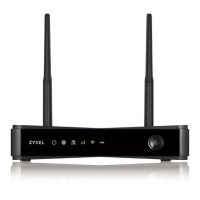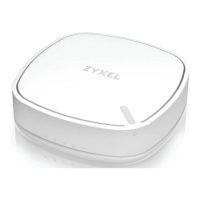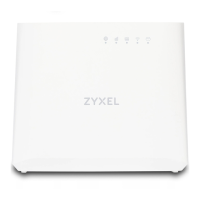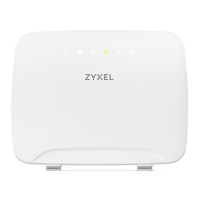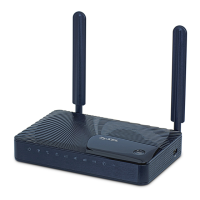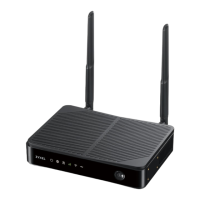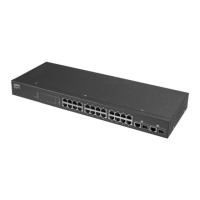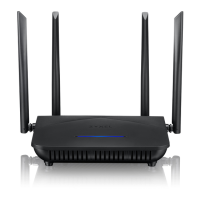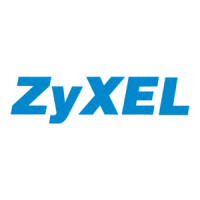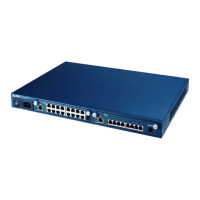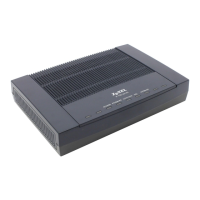Chapter 7 Networking
LTE7460-M608 User’s Guide
63
7.4 DNS Settings Screen
Click Networking > DNS Settings to configure the DNS servers your LTE7460-M608 uses. The following
screen displays.
Connection Request User
Name
Enter the connection request user name. When the ACS makes a connection
request to theLTE7460-M608, this user name is used to authenticate the ACS.
Connection Request
Password
Enter the connection request password. When the ACS makes a connection request
to the LTE7460-M608, this password is used to authenticate the ACS.
Connection Request Port The default port for access to the LTE7460-M608 from the management server is the
HTTP port, port 80. If you change it, make sure it does not conflict with another port
on your network and it is recommended to use a port number above 1024 (not a
commonly used port). The management server should use this port to connect to
the LTE7460-M608. You may need to alter your NAT port forwarding rules if they were
already configured.
Inform Select Enable for the LTE7460-M608 to send periodic inform via TR-069 on the WAN.
Otherwise, select Disable.
Inform Interval Enter the time interval (in seconds) at which the LTE7460-M608 sends information to
the autoconfiguration server.
Bound Interface Name Select whether the TR069 connection path is WAN1 or WAN2.
Apply Click Apply to save your changes.
Reset Click Reset to restore the screen’s last saved settings.
Import Certificate File
Select a File Use this field to upload a certificate the LTE7460-M608 uses for TLS/SSL
authentication.
Apply Click Apply to upload the certificate.
Current TR-069 Certificate file
File Name This field displays the name used to identify this TR-069 certificate. It is recommended
that you give each certificate a unique name.
Subject This field displays identifying information about the certificate’s owner, such as CN
(Common Name), OU (Organizational Unit or department), O (Organization or
company), S (State), and C (Country). It is recommended that each certificate has
unique subject information.
Issuer This field displays identifying information about the certificate’s issuing certification
authority, such as a common name, organizational unit or department, organization
or company and country.
Valid From This field displays the date that the certificate becomes applicable. The text displays
in red and includes a Not Valid! message if the certificate has not yet become
applicable.
Valid To This field displays the date that the certificate expires. The text displays in red and
includes an Expired! message if the certificate is about to expire or has already
expired.
The following table describes the labels in this screen.
Table 18 Networking > TR069
LABEL DESCRIPTION
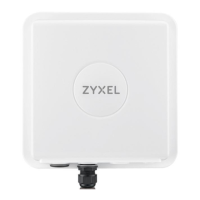
